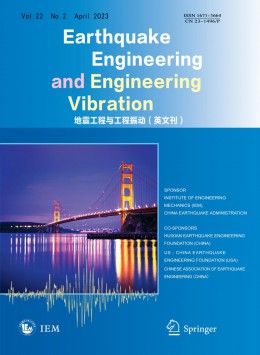如何縮短《Earthquake Engineering and Engineering Vibration》雜志的審稿周期?
來源:優發表網整理 2025-09-25 17:48:11 1662人看過
想要縮短《Earthquake Engineering and Engineering Vibration》雜志的審稿周期需要作者、編輯部和審稿人等多方面的共同努力,作者可以采取一些有效措施,間接地加快審稿進度,提升稿件的處理效率。
建議如下:
一、提高論文質量
(1)嚴格遵循投稿要求:在投稿前,仔細閱讀《Earthquake Engineering and Engineering Vibration》雜志的投稿指南,包括格式要求、字數限制、參考文獻格式等。確保稿件符合雜志的規范,避免因格式問題被退回修改,從而耽誤時間。
(2)提高論文質量:確保論文的研究內容具有創新性和學術價值,數據準確,論證嚴謹,語言表達清晰流暢。高質量的稿件更容易通過初審,進入同行評審階段。
二、選擇合適的投稿時機
(1)關注期刊審稿周期:在投稿前,了解《Earthquake Engineering and Engineering Vibration》雜志的審稿周期(預計1-3個月)和發表周期(季刊),以便合理安排投稿時間。
(2)關注期刊動態:了解期刊的專題征稿或熱點話題,針對性地投稿,可能獲得優先處理。
三、與編輯部保持良好溝通
(1)主動了解審稿進度:如果超過預計的審稿時間仍未收到回復,可以禮貌地向編輯部發送郵件,詢問稿件的審稿進度。
(2)尊重審稿意見:認真對待審稿意見,積極修改論文中的不足之處,共同探討論文的改進方向。
需要注意的是,縮短審稿周期的前提是保證稿件的質量,不能為了追求速度而犧牲學術嚴謹性。
《Earthquake Engineering and Engineering Vibration》雜志創刊于2002年,是由中國地震局主管、中國地震局工程力學研究所主辦的學術理論季刊。國內刊號CN:23-1496/P,國際刊號ISSN:1671-3664。該雜志以推動地質改革與發展、探索地質規律為宗旨,致力于為地質工作者、研究者和管理者提供一個學術交流的平臺。
《Earthquake Engineering and Engineering Vibration》雜志投稿建議:
Title Page:
The title page should contain: Title, Authors, Affiliations,
Acknowledgement, and Footnotes supplying: Correspondent
author‘s information including: the full name, complete mailing address, telephone and fax number, and, if available, e-mail address; Job titles of all authors; and The name(s) of sponsor(s) of the research contained in the paper, along with grant number(s), if any.
General: The manuscript should be provided in single-spaced typing Time New Roman, 10.5 pt., on A4 size pages in electronic format using Microsoft Word. It must be written in English and should not exceed 13,000 word-equivalents. (A journal page contains approximately 1,300 words.) Technical notes should not exceed 4,000 word-equivalents. If it is necessary to include additional information, such as appendices, these should be submitted electronically for inclusion on a web site for the journal.
Abstracts: Each paper should include an Abstract of 150-200 words, reporting concisely on the purpose of the work, the scope of the effort, the procedures used to execute the work (if of special interest), the major findings, and a list of three to eight keywords. The abstract must be self-contained, and it must not require reference to the paper to be understood.
Text: Follow this order when typing manuscripts: Title, Abstract, Keywords, Main text, Appendix, References, Vitage, Figures (including captions) and then Tables. Footnotes are to be avoided (except for table footnotes). Please complete text minus the title page, acknowledgment, and any running headers with author names, to allow blinded review.
Units: The SI system is to be used throughout; if it is necessary to use other units, these should be added in parentheses.
References
References should appear within the text as the author name(s) followed by the year of publication in parentheses. A list of all references must be given at the end of the text in alphabetical order by last name of first author. Make sure the reference information is complete and accurate, including as necessary and in the following order: last names and initials of all authors; year of publication; title of paper, report or book chapter (in quotes); title of book or periodical (in italic); volume and issue numbers; name and location of publisher (for books), name and location of publisher or sponsor for proceedings), or city of publication (for non-U.S. journals); and inclusive page numbers. The references should be listed in the following style:
Liu Huixian and Zhang Zaiyong (1980), “Lessons Learned from the 1976 Tangshan Earthquake,” Proceedings of the 7th World Conference on Earthquake Engineering, Vol. IX, Istanbul, Turkey, pp.453– 460.
Huo Linsheng and Li Hongnan (2004), “Torsionally Coupled Response Control of Offshore Platform Structures Using Circular Tuned Liquid Column Dampers,” China Ocean Engineering, 18(2):173–183. (in Chinese)
Newmark NM and Rosenblueth E (1971), Fundamentals of Earthquake Engineering, Prentice-Hall, Inc., Englewood Cliffs, N.J.
聲明:以上內容來源于互聯網公開資料,如有不準確之處,請聯系我們進行修改。
